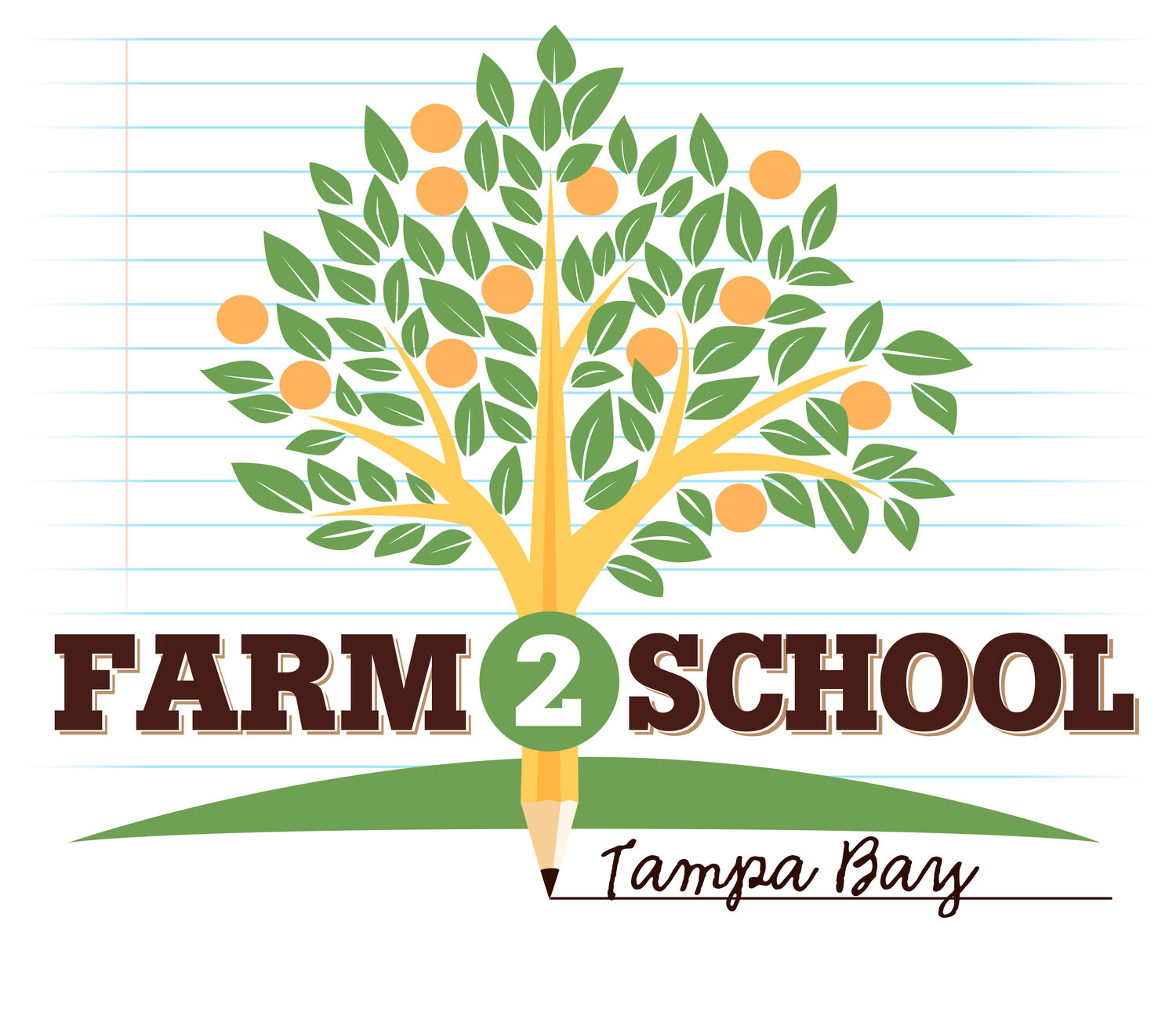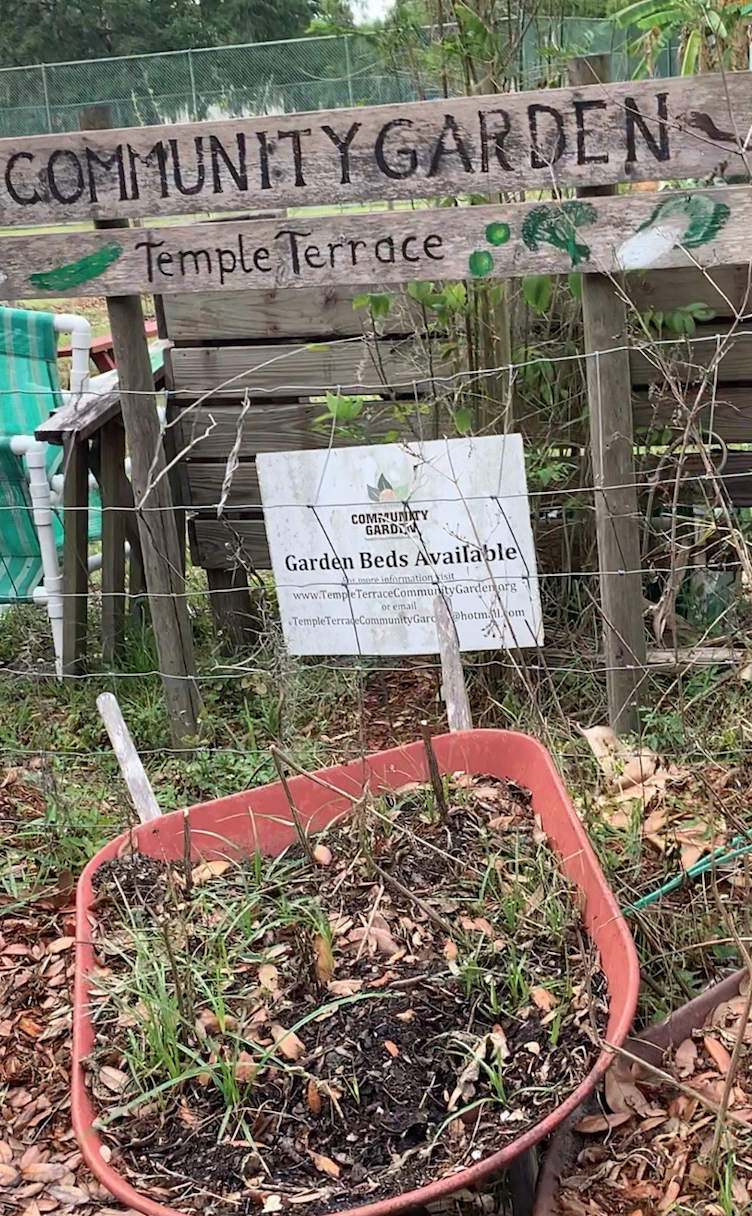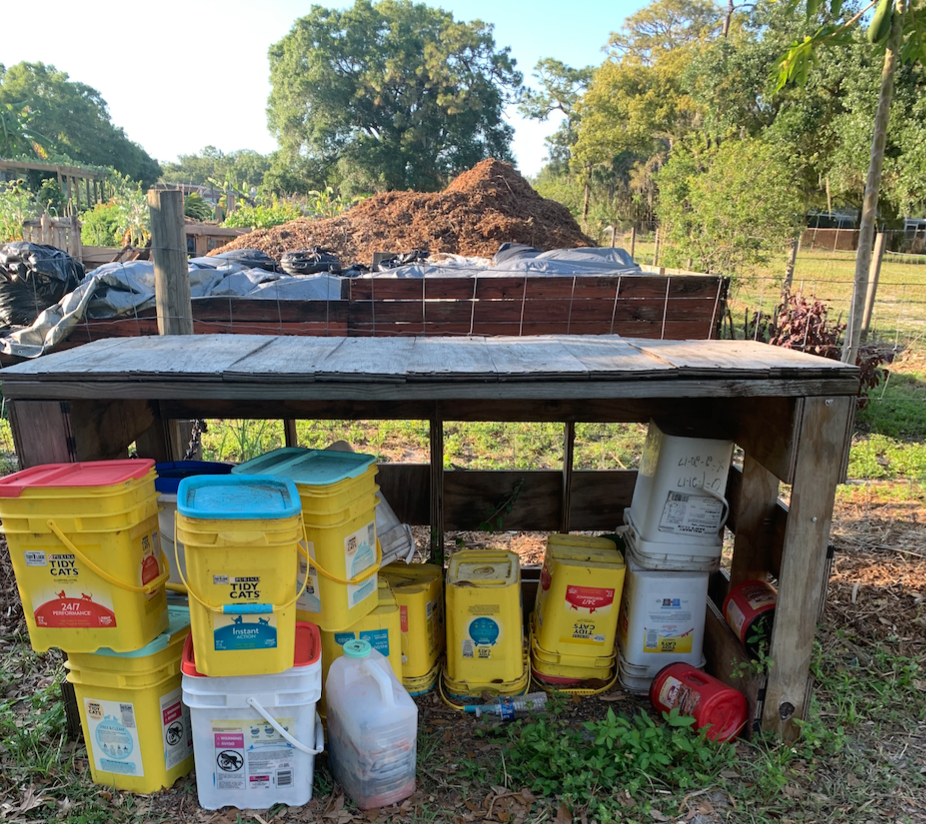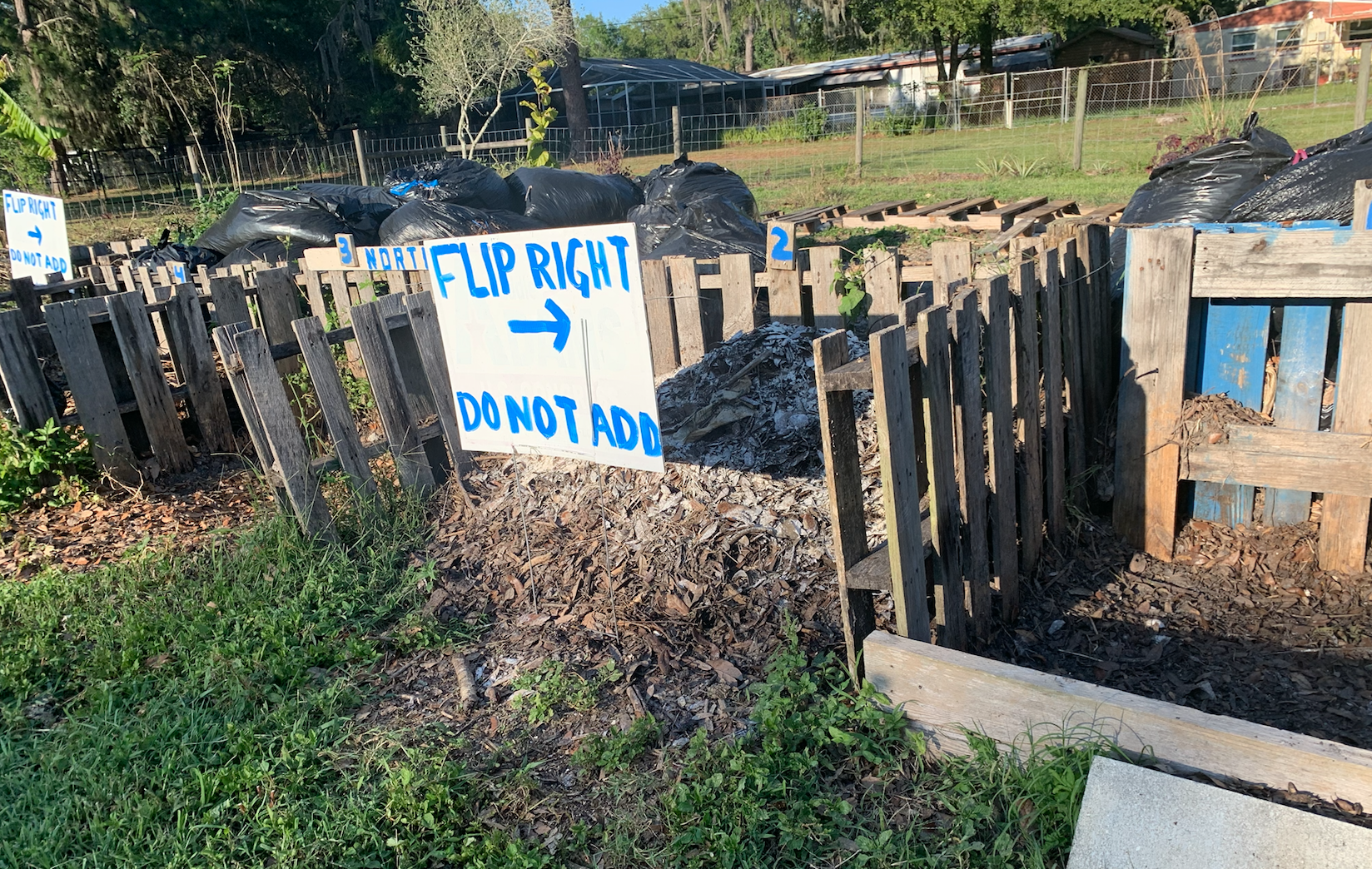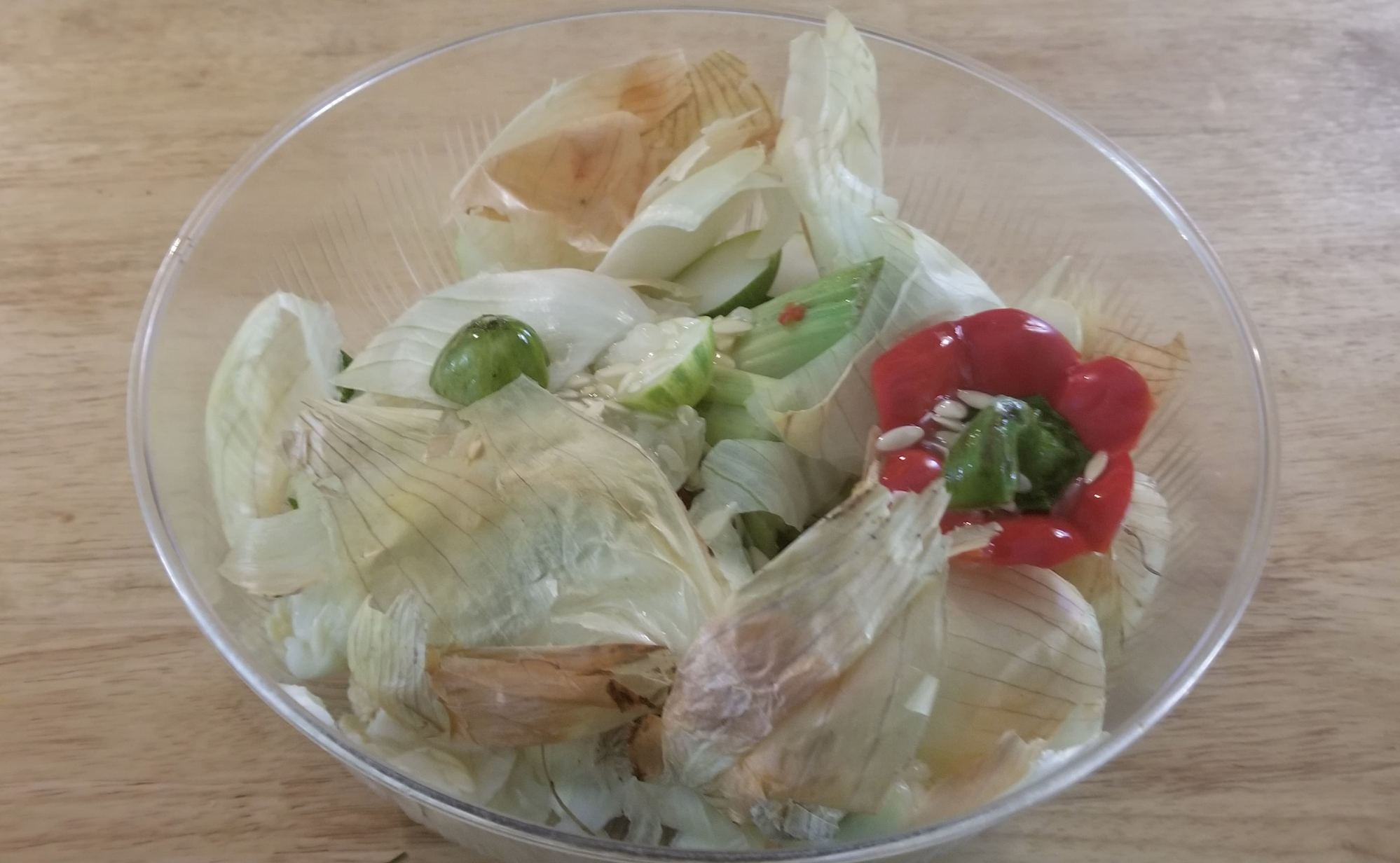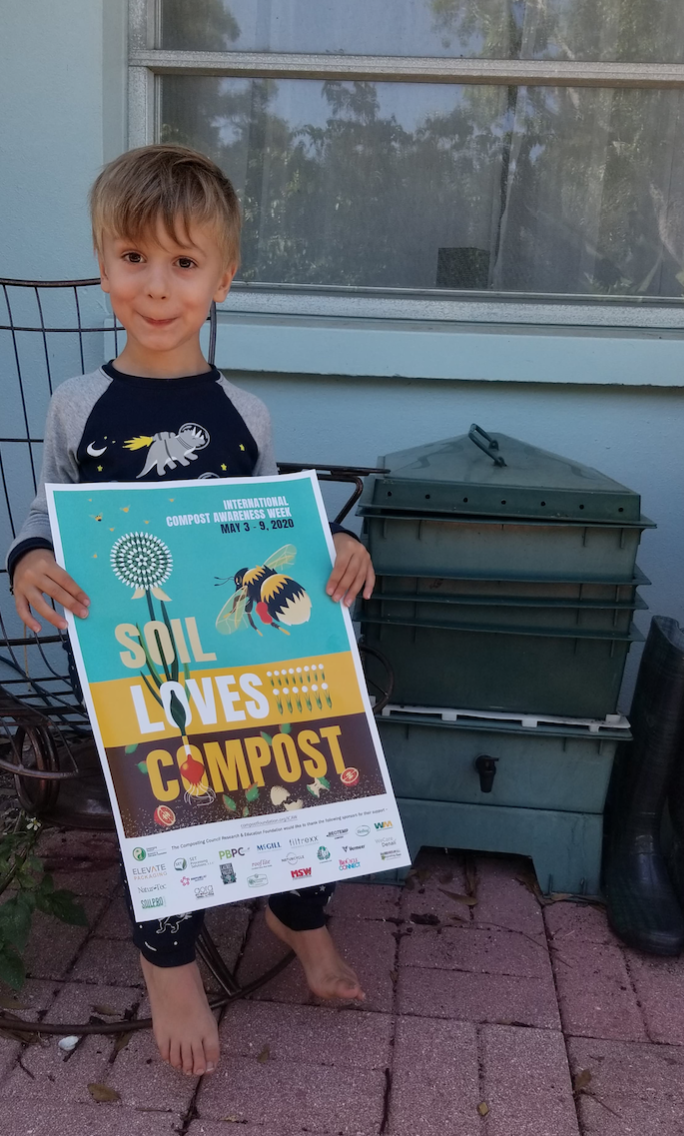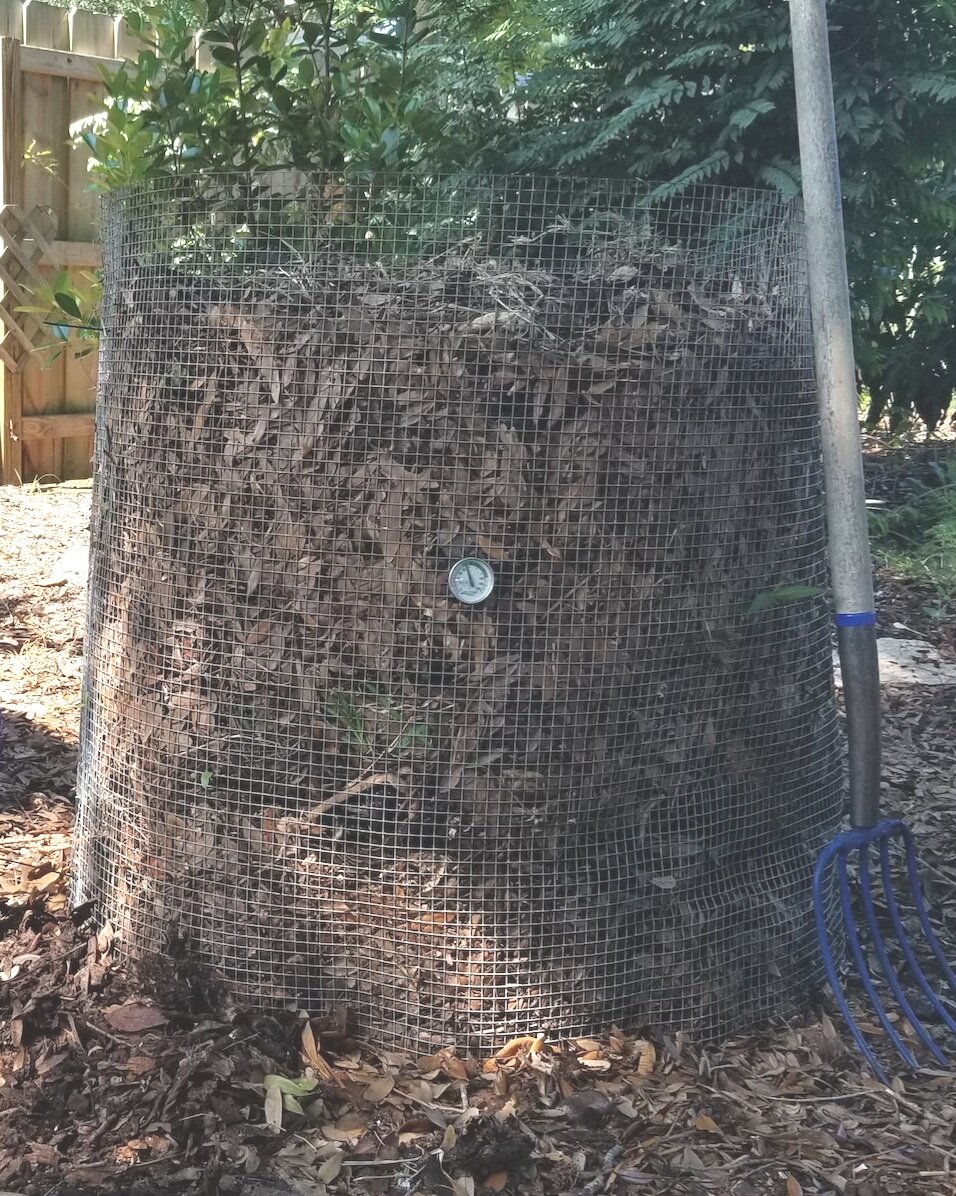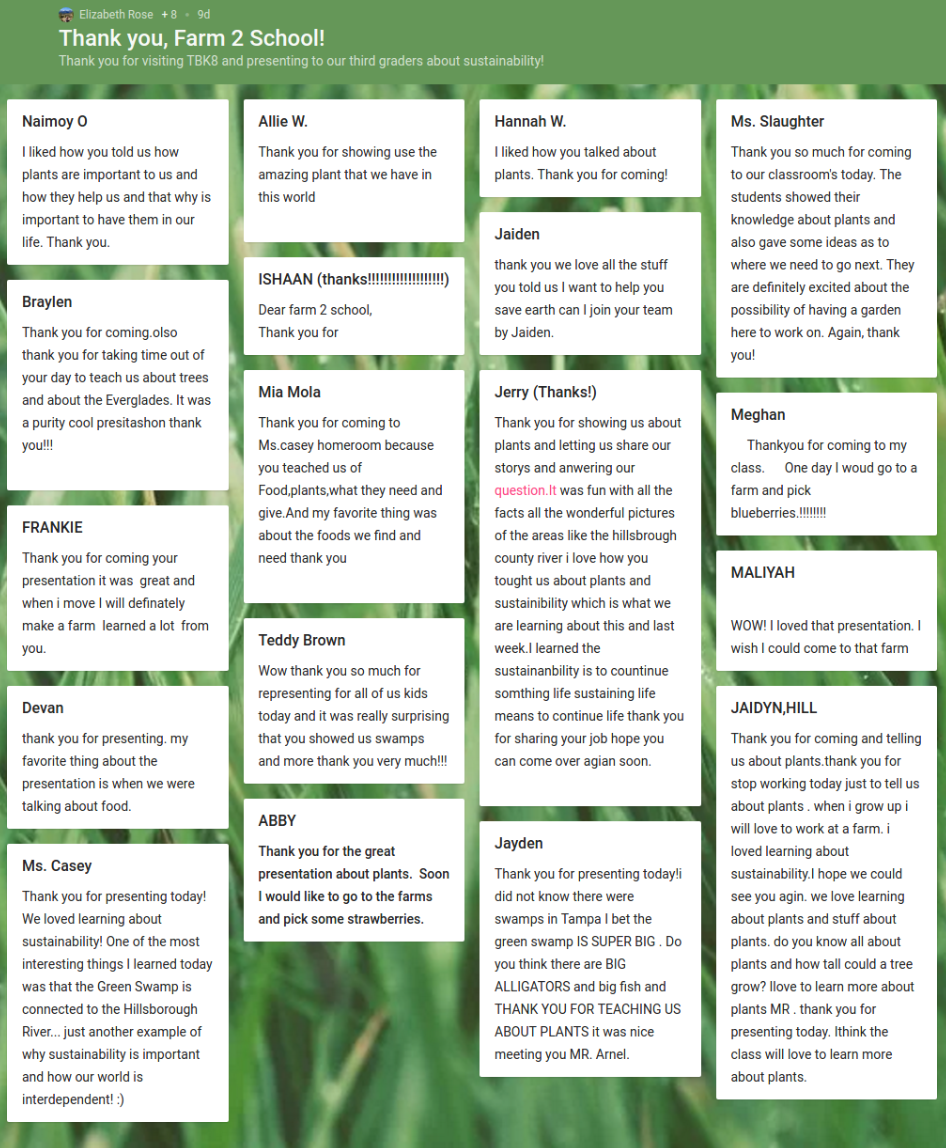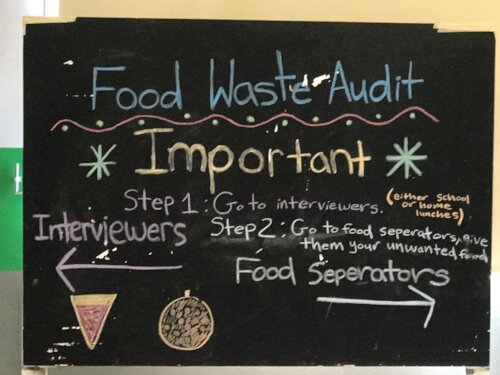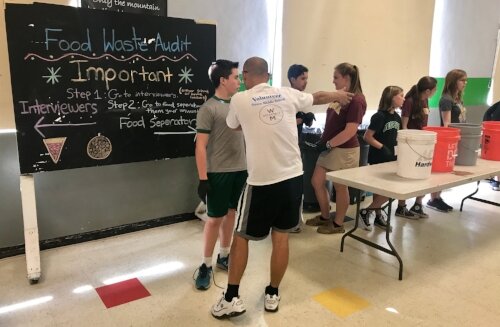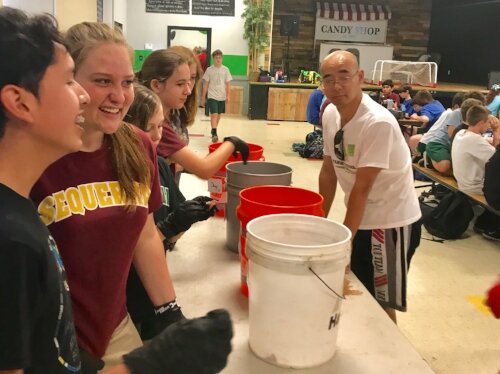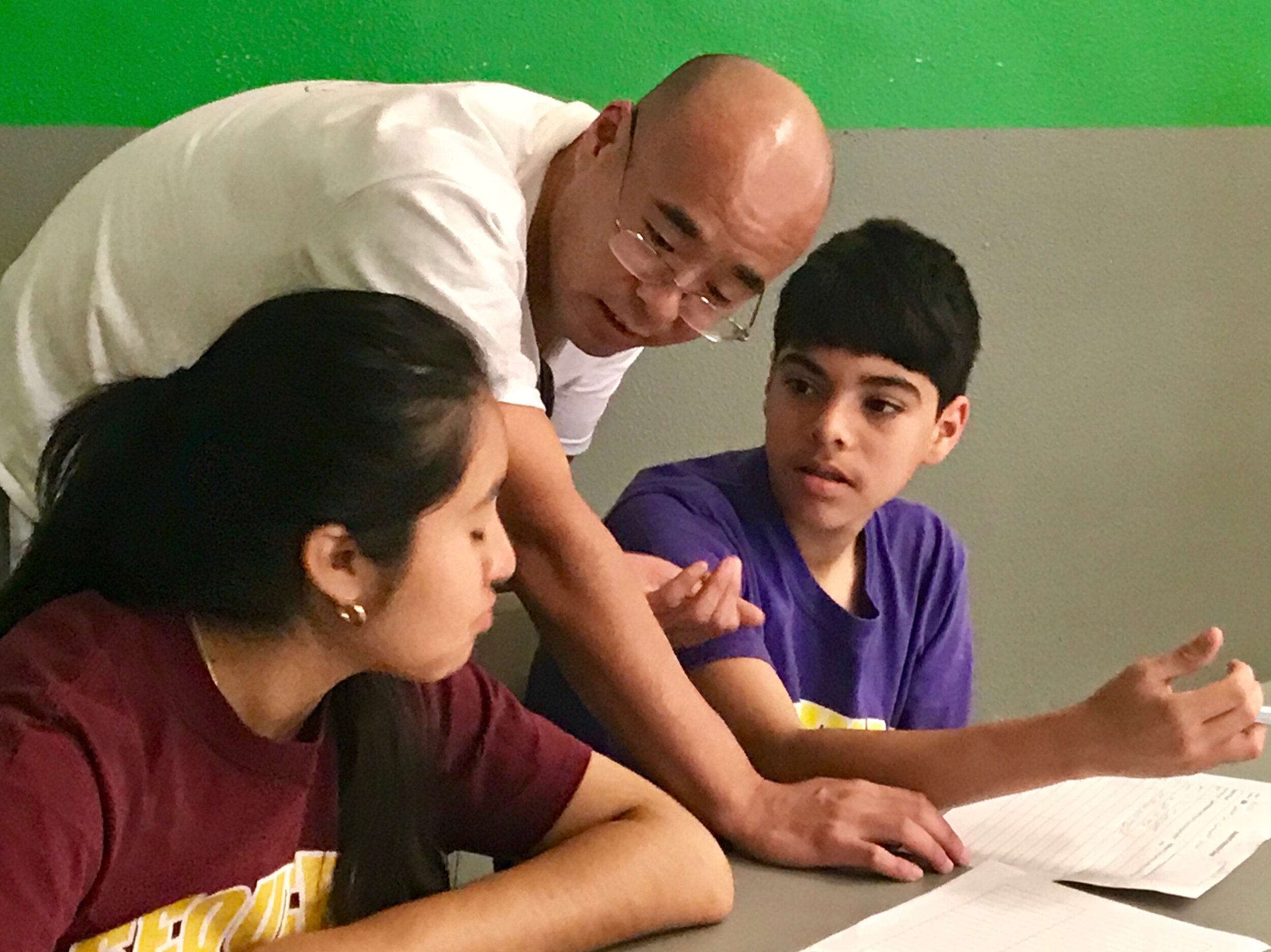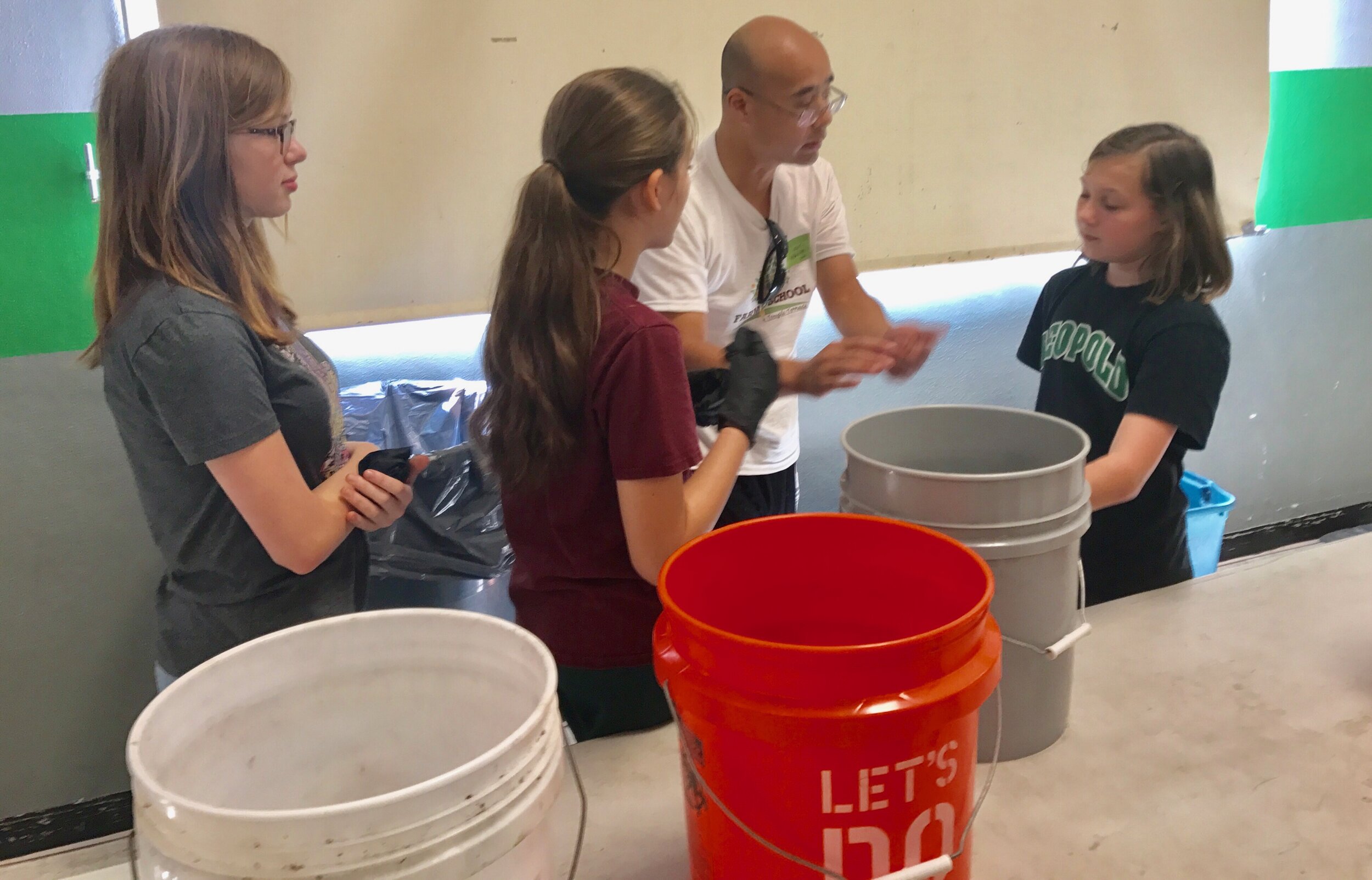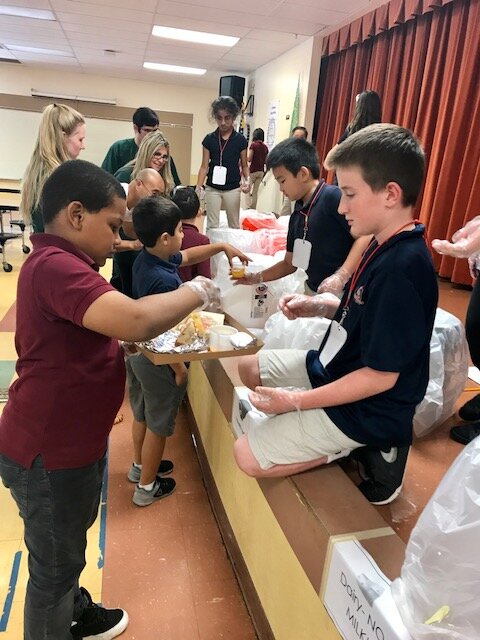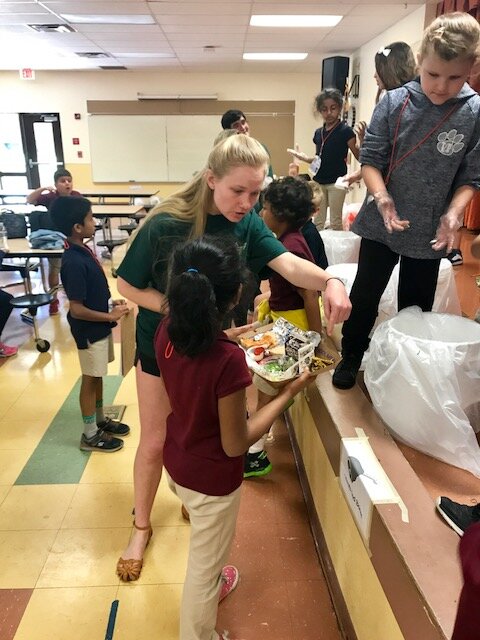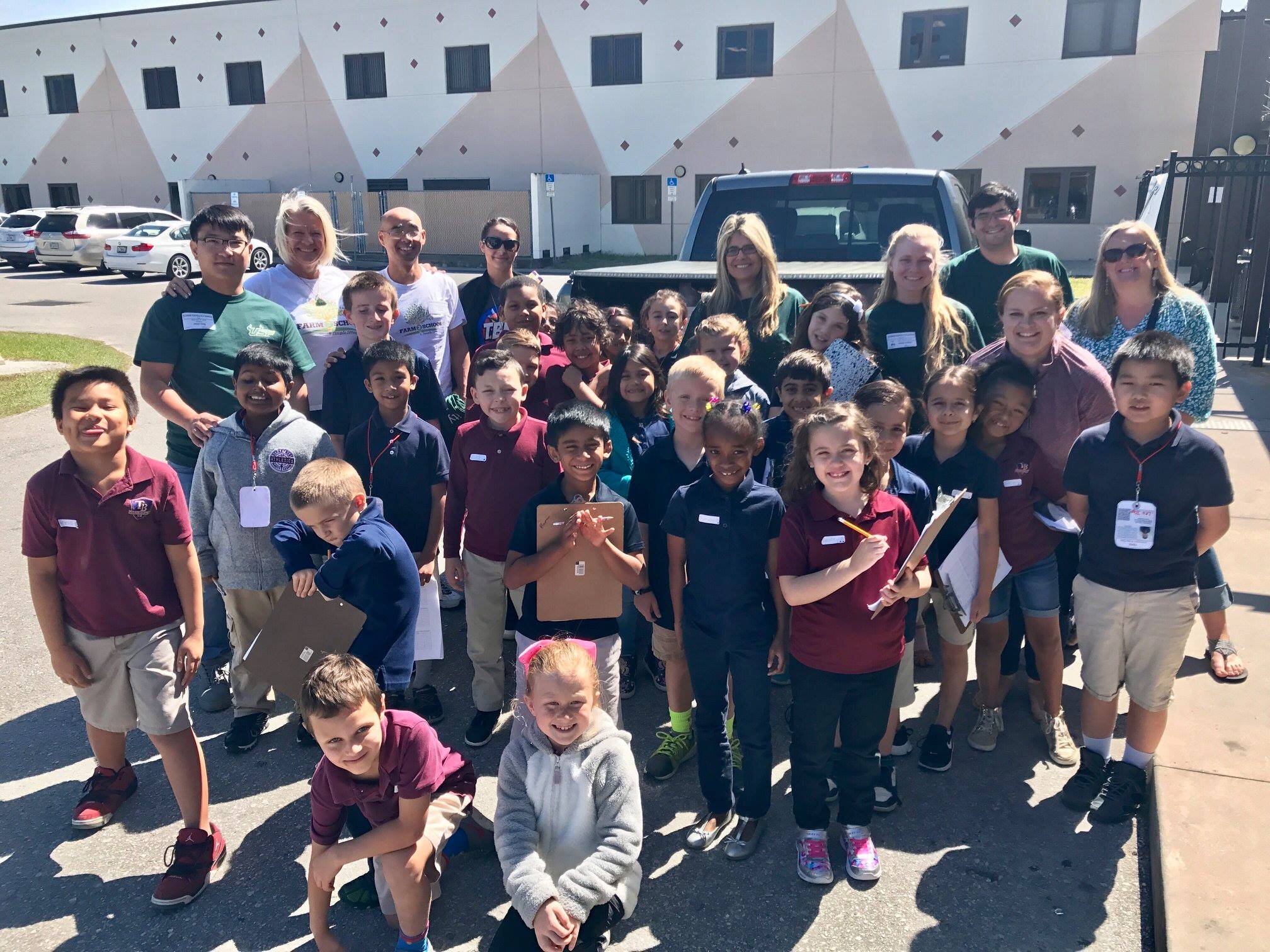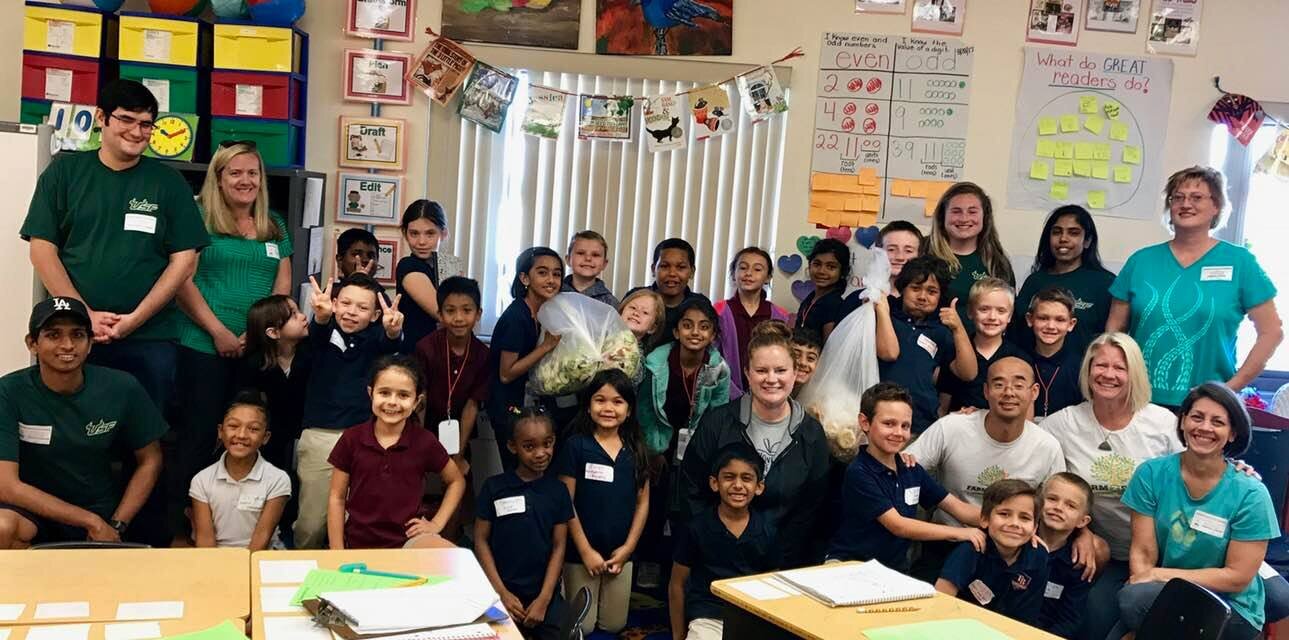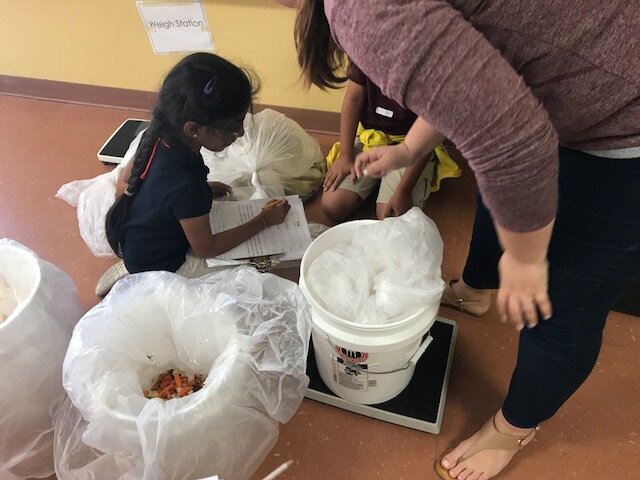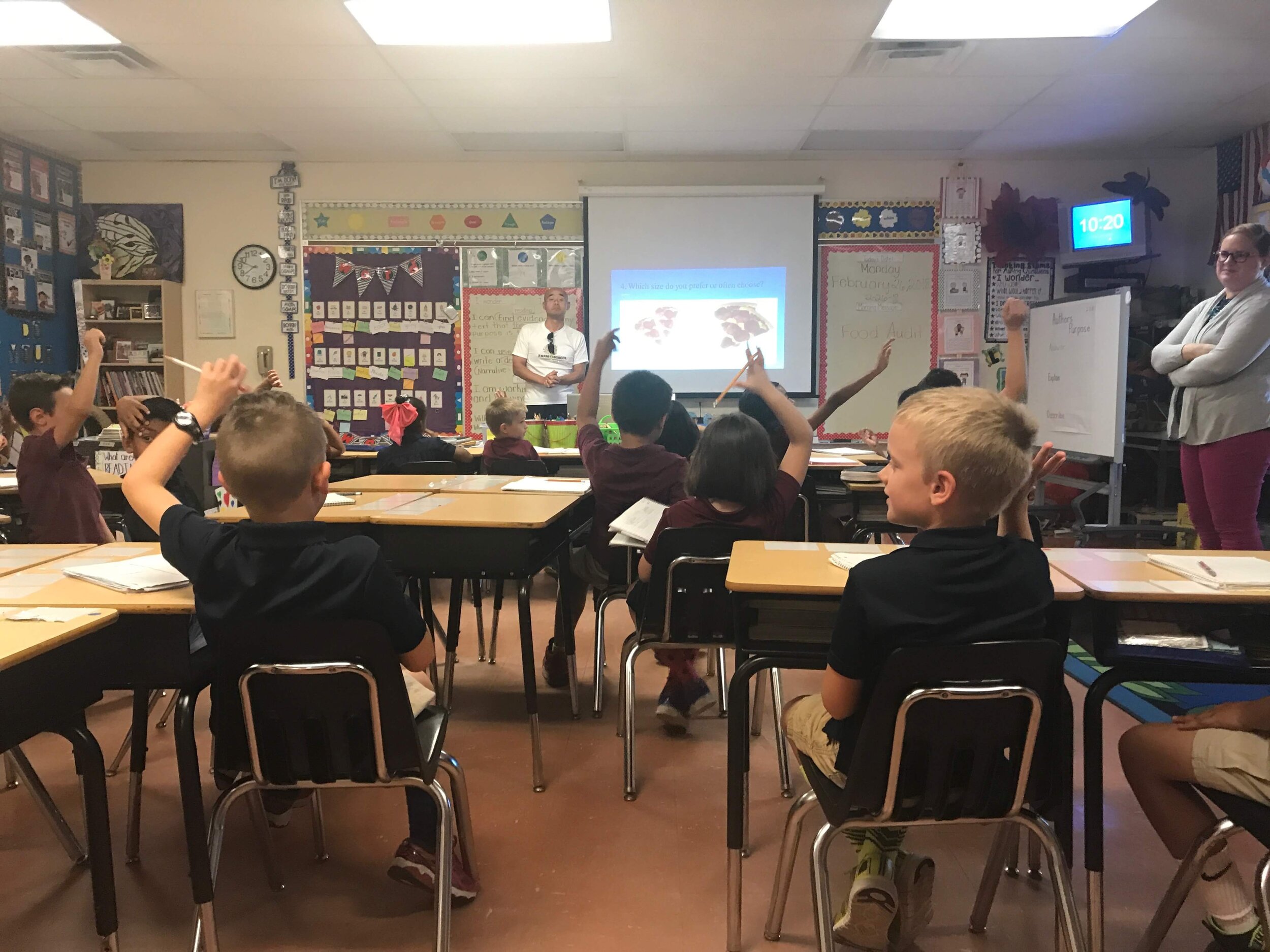So you want to start composting?
Composting is a fun and easy way to turn your family kitchen scraps into compost that can be used to enrich the soil in your garden! And you’ll be doing your part to reduce the carbon emissions from food waste going into the landfill. Read below the different compost methods used by Tampa Bay families.
The Zambito Family has a compost tumbler!
Quinn helps her mom Heather collect food scraps to take to the backyard compost bin. Mom Heather explains:
1. How did you get started composting? I went to the class that the county offers where they educate you on how to compost and what to do.
2. How do you collect scraps, what container do you use? Do you refrigerate or take to compost daily? I have a small composting container I got from Amazon that I keep on my counter top to keep scraps. We take them out daily.
3. What type of scraps do you put in? What do you avoid? Vegetable and fruit peelings, egg shells, coffee grounds, dryer lint. We avoid meat and dairy.
4. What advice would you give to other families getting started? I would say to register to take the free county class once they start them again. It’s a great way to get informed and you get a free composting bin when you leave. It’s great!!
For more information about the course and materials offered by Hillsborough County through UF/IFAS Extension, visit their website and register for the course. The cost is $5 for Hillsborough residents. You can find more information about composting in Hillsborough County on the Hillsborough Community Composting Alliance website.
The Brown Family composts at their local community garden!
The Brown Family takes their kitchen scraps to the neighborhood community garden. They use the fresh compost to enrich the soil for their garden!
Email interview with mom, Stefanie Brown:
1. How did you get started composting?
We were introduced to composting by our local community garden. We learned that we could save money on buying materials to prep our garden bed by composting our own soil. By composting, we could also cut down on our waste.
2. How do you collect scraps, what container do you use? Do you refrigerate or take to compost daily?
We compost daily and/or on the day of disposal. At the garden, we use dozens of recycled plastic containers. (the kind that rock salt is bought in) We also have wood bins for each step of the composting process.
continued from above:
3. What type of scraps do you put in? What do you avoid?
We mostly just put our rotted produce. This year we even disposed of our fall decorative pumpkins there. We also put weeds and anything from our garden that has rotted or is mildewy.
4. What advice would you give to other families getting started?
The members of your local community garden are very knowledgeable and happy to share practical tips. Youtube can also be a great resource to get started, especially if you want quick, simple info with lots of visuals.
Amanda Streets and son Gavin compost with garden fabric.
Email interview with Amanda Streets, Founder/Director, Pinellas Community Compost
Amanda and her son Gavin are experienced composters. They compost at home using a simple round garden fabric. Amanda consults with individuals, organizations and businesses on how to set up and maintain a compost system through her business, Pinellas Community Compost.
1. How did you get started composting? I have always composted. I really got into composting after I took some gardening and permaculture courses, learning better composting methods for making large amounts of compost quickly. Read more below…
2. How do you collect scraps, what container do you use? Do you refrigerate or take to compost daily? Sometimes I use a stainless steel container with a charcoal filter. I can take that out every few days. Sometimes I use a bowl that I have out already, which I take out daily. I do not refrigerate my food scraps.
3. What type of scraps do you put in? What do you avoid? Vegetable and fruit peelings, leftover plant based cooked foods, egg shells, coffee grounds, stale cereal and crackers. Because my composting system is much larger than most and it is monitored with a temperature gauge, it can handle a wider range of materials than a small system like a tumbler.
4. How do you turn this type of compost system? I actually open the wires that I use to hold it together and "unwrap" the compost tower. Then I move over a few feet, close the wire ring again with the wires, and use my pitchfork or shovel to move it to the empty ring. I use a special turning method so that each part of the compost eventually gets into the center, which gets hot enough to break down pathogens and weed seeds.
Dahlia Bumbaca created a compost site for USF students.
Email interview with Dhalia Bumbaca, USF Student Travel Services Coordinator
1. How did you get started composting? I grew up in a city that had municipal compost collection. Therefore, I was introduced to the importance of minimizing waste at a very young age. In moving to Tampa, it was difficult to start composting as a University student living in dorms or living in an apartment. However, after joining Greco’s Community Compost, recognized an opportunity to connect individuals seeking out a zero-waste lifestyle with access to composting. Working in the Outdoor Recreation Education Center at the University of South Florida, my supervisors championed my ideas and through what I had learnt with Tampa Bay Farm2School was able to bring composting to life for USF Outdoor Recreation.
2. How do you collect scraps, what container do you use? Do you refrigerate or take to compost daily? Trying to keep this project as low budget and easy as possible in the initial phases, I use old Tupperware to collect my food waste. Once it is full, I store the full Tupperware in a tin tight seal bin and bring this larger bin to my compost weekly.
3. What type of scraps do you put in? What do you avoid? I follow the general guidelines of all organic waste (vegetable and fruit peelings, eggshells, etc.), avoiding meat and dairy and using coffee grinds to help regulate temperature. I also try to cut up waste before putting it in so it decomposes faster. For browns I use dried up oak leaves as my browns and am hoping to start including rabbit poop! I think the key to this compost’s success is the fact that it’s in full sunlight!
4. What advice would you give to other families or individuals getting started? Composting sounds a lot more difficult than it really is. There are a multitude of ways one can compost and plenty of resources available online to get you started! Hillsborough County also has a FREE class that is a great way to get informed and you get a free composting bin when you leave. Remember to start small and just keep growing!
5. Do you have future plans to improve, grow, or share your composting journey? Absolutely! The goal of this project is to create a larger network within the USF community that is engaged in composting. While COVID-19 created some barriers to expanding the reach of this program, it has given us the opportunity to thoughtfully approach this solution and build out the framework that will ensure its sustainability! Hopefully within the next few months this will become a community compost as well!
How to start composting at home
The process to setting up a home composting system is simple and inexpensive. But first what is compost? Compost is the process of turning organic material (food scraps, grass clippings, cardboard, etc.) into organic fertilizer. In addition to adding organic fertilizer to the soil, compost benefits the physical and biological structure of the soil; providing plants with the ideal conditions to grow in. Watch this video (right) to learn more!
Choose a location with moderate sunlight with access to water and a container (container must have access to air all around, so drilling small holes can help with this) to put all the organic waste in.
Add “green” (nitrogen based) and “brown” (carbon based) organic materials in a 1:2 ratio.
Examples of green materials are: grass clippings, vegetable and fruit scraps, and coffee grounds and brown materials can be: cardboard, shredded mail, untreated wood, wine corks, and sawdust.
After layering your organic material, water it and rotate it about every two weeks or so.
You can add a shovel full of your garden soil to your composting bin to add beneficial microorganisms to speed up the composting processs.
Depending on the size and quality of the material you are trying to compost you should have a sustainable and nutrient rich organic fertilizer in anywhere from 3 to 10 months.
If you do not have the space or time to compost at home, try searching on MakeSoil.org to find a site near you that will accept your food scraps! There may also be local composting programs in your area for a fee.
If you are local to the Tampa Bay Area, Tampa Bay Farm 2 School hosts our own composting site at Greco Middle School in Temple Terrace. To learn more about it, check out this page. If you would like to become a soil supporter, sign up here.
What is Vermicomposting?
It’s simply letting worms to the work of breaking down food scraps into compost! Want to build your own? It’s easy to get started! Check out these online resources for vermicomposting at home or in the classroom!
“WOrm Hotel” vermicomposting at the boys & Girls club
Photos from the audit at Learning Gate and thank you notes from students
